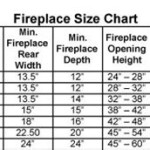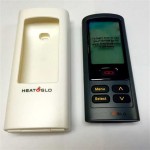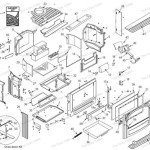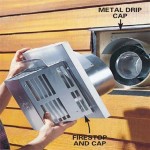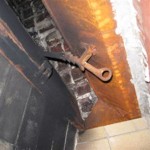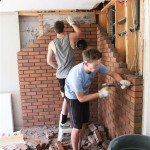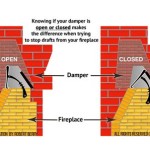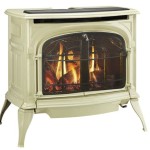Are Ventless Fireplaces Safe for Home Use?
Ventless fireplaces, also known as vent-free fireplaces, have gained popularity as a convenient and aesthetically pleasing heating solution for homes. Unlike traditional fireplaces that require a chimney or venting system, ventless models operate without the need for external exhaust. This design feature offers greater installation flexibility and cost savings by eliminating the construction and maintenance associated with chimneys or vents. However, the safety of ventless fireplaces remains a subject of ongoing debate and scrutiny. Understanding the operational principles, potential risks, and safety measures associated with these appliances is crucial for making informed decisions about their use.
Ventless fireplaces typically burn natural gas or propane. The combustion process produces heat, water vapor, carbon dioxide, and trace amounts of other gases, including carbon monoxide and nitrogen dioxide. Proponents of ventless fireplaces argue that they are designed to burn fuel efficiently, minimizing the production of harmful emissions. They often cite industry certifications and safety features designed to shut off the fireplace if oxygen levels become dangerously low or if excessive levels of carbon monoxide are detected. However, critics express concerns about the potential for indoor air quality degradation and the risk of carbon monoxide poisoning, especially in poorly ventilated or improperly maintained environments.
Understanding the Operational Mechanisms of Ventless Fireplaces
Ventless fireplaces are engineered to achieve complete combustion, minimizing the production of harmful byproducts. The efficiency of the combustion process hinges on maintaining a proper air-to-fuel ratio. Most models incorporate oxygen depletion sensors (ODS) that continuously monitor the oxygen levels in the surrounding environment. If the oxygen level drops below a predetermined threshold, typically around 18 percent, the ODS will automatically shut off the gas supply to the fireplace, preventing incomplete combustion and the build-up of carbon monoxide. This safety feature is designed to mitigate the risk of carbon monoxide poisoning, a serious concern associated with any fuel-burning appliance.
Another key aspect of ventless fireplace operation is the presence of a carbon monoxide sensor. While ODS systems are intended to prevent carbon monoxide production, these sensors provide an additional layer of protection by directly detecting the presence of carbon monoxide in the air. If the sensor detects elevated levels of carbon monoxide, it will trigger an alarm and shut down the fireplace. The effectiveness of these sensors depends on their proper calibration and maintenance, as well as their placement within the room. Regular testing of both the ODS and carbon monoxide sensors is critical to ensure their functionality and reliability.
The size and BTU (British Thermal Unit) rating of a ventless fireplace are also important factors to consider. BTU ratings indicate the amount of heat the fireplace can generate. Selecting a fireplace with an appropriate BTU rating for the room size is essential to prevent overheating and maintain a comfortable indoor environment. Overly powerful fireplaces can lead to excessive humidity and potentially contribute to the build-up of pollutants. Manufacturers typically provide guidelines on the appropriate room size for specific BTU ratings, and it is crucial to adhere to these recommendations.
Potential Risks Associated with Ventless Fireplace Use
Despite the safety features incorporated into ventless fireplaces, certain inherent risks remain. The primary concern is the potential for carbon monoxide poisoning. Carbon monoxide is a colorless, odorless gas that can be deadly if inhaled in sufficient quantities. Symptoms of carbon monoxide poisoning can include headache, dizziness, nausea, and confusion, and prolonged exposure can lead to loss of consciousness and death. While ODS systems and carbon monoxide sensors are designed to prevent carbon monoxide build-up, their effectiveness can be compromised by factors such as improper installation, inadequate ventilation, or malfunctioning sensors.
Another risk associated with ventless fireplaces is the potential for indoor air quality degradation. The combustion process produces water vapor, which can increase humidity levels in the home. Elevated humidity can promote the growth of mold and mildew, particularly in poorly ventilated areas. Additionally, ventless fireplaces release small amounts of nitrogen dioxide and other pollutants into the air. These pollutants can exacerbate respiratory problems, especially for individuals with asthma, allergies, or other respiratory conditions. Proper ventilation is crucial to mitigate these risks and maintain acceptable indoor air quality.
Furthermore, the improper use or maintenance of ventless fireplaces can increase the risk of fire. Flammable materials should be kept at a safe distance from the fireplace to prevent accidental ignition. Regular cleaning and inspection of the fireplace are also essential to ensure its safe operation. Dust, debris, and other contaminants can accumulate within the fireplace, potentially interfering with its proper functioning and increasing the risk of malfunction. It is important to follow the manufacturer's recommendations for cleaning and maintenance to minimize the risk of fire.
Safety Measures and Best Practices for Ventless Fireplace Operation
To mitigate the potential risks associated with ventless fireplaces, it is essential to implement a range of safety measures and adhere to best practices for their operation. The first and perhaps most critical step is to ensure proper installation. Ventless fireplaces should be installed by a qualified professional who is familiar with local building codes and manufacturer's recommendations. Proper installation ensures that the fireplace is operating safely and efficiently, and that all safety features are functioning correctly.
Adequate ventilation is crucial for maintaining acceptable indoor air quality. Ventless fireplaces should only be used in rooms that are adequately ventilated. Opening a window or door slightly can help to increase airflow and prevent the build-up of pollutants. Avoid using ventless fireplaces in small, enclosed spaces, such as bathrooms or bedrooms, where ventilation is limited. The frequency and duration of fireplace use should also be carefully considered. Prolonged use can lead to the build-up of moisture and pollutants, so it is important to limit the amount of time the fireplace is in operation.
Regular maintenance and inspection are essential for ensuring the safe and efficient operation of ventless fireplaces. The fireplace should be cleaned regularly to remove dust, debris, and other contaminants. The ODS and carbon monoxide sensors should be tested periodically to ensure their functionality. The manufacturer's recommendations for maintenance and inspection should be carefully followed. In addition, it is advisable to have the fireplace professionally inspected at least once a year to identify any potential problems or safety hazards.
Furthermore, homeowners should install and maintain working carbon monoxide detectors throughout their homes, especially near sleeping areas. Carbon monoxide detectors provide an early warning of carbon monoxide build-up, allowing occupants to evacuate the premises and seek medical attention. It is important to test carbon monoxide detectors regularly and replace their batteries as needed. The placement of carbon monoxide detectors should be in accordance with manufacturer's instructions and local building codes.
Finally, educating all household members about the potential risks associated with ventless fireplaces and the proper safety precautions is crucial. Everyone should be aware of the symptoms of carbon monoxide poisoning and the steps to take if they suspect a leak. They should also be familiar with the operation of the fireplace and the location of the carbon monoxide detectors. By promoting awareness and implementing appropriate safety measures, homeowners can minimize the risks associated with ventless fireplaces and enjoy their benefits safely and responsibly.
.aspx?strip=all)
Ventless Fireplaces Explained Safety Of Vent Free Fires

Are Vent Free Gas Fireplaces Safe Ventless

Vented Vs Ventless Gas Fireplace Logs

Vented Vs Ventless Gas Logs What S The Difference

Are Ventless Fireplaces Safe
:max_bytes(150000):strip_icc()/ventless-gas-fireplaces-4160746-hero-f9d4bdcd9bd446eb84406de306f790ba.jpg?strip=all)
How To Pick Out A Ventless Gas Fireplace

Considering A Ventless Gas Fireplace Here S What You Need To Know Bob Vila

The Debate Continues Are Ventless Fireplaces Safe

Ventless Gas Fireplace Is It Safe

What Is A Ventless Gas Fireplace Experts In Gaithersbutg Md
Related Posts

